- The 2026 Lexus RZ is updated with more range and power.
- A new RZ 550e F Sport model slightly dials up the performance and offers a "virtual manual" shift mode.
- Lexus is also introducing a steer-by-wire system with a yoke, though it'll only be available in Europe — for now.
2026 Lexus RZ First Drive Review: Finally Worth Considering
Just don't expect a lot of fun from the new "manual" mode
The Lexus RZ has faced an uphill battle since it launched in 2023. While it was a great Lexus — comfortable, easy to drive and luxurious — it wasn't a great EV. When we tested the original dual-motor all-wheel-drive RZ 450e, it only managed 204 miles (while riding on 20-inch wheels) in the Edmunds EV Range Test. Even a few years ago, that result was at the bottom of the pack compared to other luxury EVs of a similar size, like the Tesla Model Y or Genesis GV60.
Now, though, things have changed. In addition to a few other updates, Lexus has fitted the 2026 RZ with a larger battery, resulting in higher estimated driving range. All of this is enough to finally make Lexus' first EV a worthy alternative to its competitors.
Bigger = better?
The 2026 RZ 450e gets a slightly larger 74.7-kWh battery pack, an increase of about 3.3 kWh. Lexus says the RZ 450e will now do 266 miles on a charge when riding on 18-inch wheels, a jump of 46 miles over the outgoing model (with the same wheels). It's also got an extra 5 horsepower for a total of 313 hp, though it's unlikely you'll feel that difference.
The RZ 350e — previously called 300e — features the same battery, giving it about 1.4 kWh more capacity than before. According to Lexus, this model will break the crucial 300-mile barrier and travel up to 302 miles on a single charge (on 18-inch wheels), an increase of 36 miles from the 2025 model. The 350e is also more powerful than before, boasting 224 hp, an increase of 23 hp.
New for 2026 is the RZ 550e F Sport, and not only is it the most powerful model in the lineup with 408 hp, it's also got the biggest battery, at 77 kWh. Unfortunately, this is where the "bigger doesn't mean better" adage comes into play: Due to the extra power and the 20-inch wheels (the only size available with this model), the larger battery capacity doesn't result in more range, and the 550e can only manage an EPA-estimated 228 miles on a charge.
All 2026 RZ models now have a Tesla-style North American Charging Standard (NACS) port, which Lexus has moved to the passenger side for greater compatibility with Tesla Superchargers. The RZ's maximum Level 3 fast-charging capability remains unchanged at 150 kW, with the ability to charge from 10% to 80% in about 30 minutes, which is slower than many of the Lexus' rivals. Lexus has also upgraded the RZ's lower-level AC charging capability with a higher-capacity 11-kW onboard AC charger, up from the previous 7 kW.
Drives like a Lexus
The bulk of my drive is spent in a European-spec RZ 500e, which is a model we aren't getting in the United States. Its closest equivalent is the RZ 450e — both have a dual-motor all-wheel-drive setup and the same suspension tuning — but the 500e has about 60 more horsepower. It's quicker but otherwise largely the same as the 450e.
I've never had an issue with the way the RZ handles the road, and that remains true for 2026. My drive route consists of various roads around the gorgeous Algarve region in southern Portugal, and the RZ performs just as any Lexus should: composed, quiet and easy to drive. The roads in this region are littered with hard to see and surprisingly large speed humps, but even those fail to significantly upset the RZ with its soft suspension.
However, even with its compliant chassis, the RZ is more impressive than you might guess when the road gets curvy. Body roll is limited, and overall handling feels precise and responsive. Lexus revised the RZ's all-wheel-drive system for 2026 and says it now achieves greater traction and driving stability, which only adds to the electric SUV's handling prowess. Grip is largely limited by the RZ's tires, rather than the SUV itself. None of this is to say that the RZ inspires particularly spirited driving, but it'll get you through a mountain road comfortably and easily, like a Lexus is meant to.
The RZ's standard electric power steering is typical Lexus — think light and a bit disconnected but responsive. It's not sporty, but it's not supposed to be, and it does the job just fine for a small electric luxury crossover.
The most immediate difference you'll notice when stepping down to the RZ 350e is power. While the 500e is genuinely quick, the 350e takes its time. It's not slow, but you can definitely feel the power deficit. Lexus quotes a 7.1-second 0-60 mph time for the 350e versus 4.9 seconds for the 450e, a significant jump, but still adequate for most people. The RZ 350e is only available with front-wheel drive, so there's a bit less grip through the corners than in all-wheel-drive models, but it's nothing egregious.
The RZ still doesn't offer full one-pedal driving, and even in its strongest setting, the regenerative braking is pretty weak compared to what you'll find on other EVs. I'm a fan of one-pedal driving; I'd like to see Lexus incorporate it into future electric models.
Going manual
The RZ 550e F Sport, new for 2026, is the sportiest of the lineup. It's got 408 horsepower, retuned suspension dampers, exclusive 20-inch wheels with aero covers, and even a slightly comical-looking rear wing.
Frankly, this model drives largely the same as the 500e. I didn't notice much of a difference in the suspension or overall handling. That said, the 550e F Sport is certainly quicker than the 500e, and even more so than the 450e we'll get in the U.S.; Lexus says it'll scoot from 0 to 60 mph in just 4.1 seconds. Whether that 0.8-second reduction in 0-60 time is worth a 38-mile sacrifice in range, though, is up to you.
More interestingly, the RZ 550e F Sport debuts Lexus' first-ever "virtual manual" gear shift system, called M mode. It's similar to what Hyundai offers on the Ioniq 5 N: Eight simulated gears can be cycled through via paddles on the steering wheel, and there's an accompanying sound to go along with it. However, while Hyundai's system is fantastic, fun and truly enhances the driving experience, Lexus' still needs some work.
Unless you "upshift" after holding a fake "redline" for a moment, you just don't feel much of anything, and even those shifts seem to get less and less intense as your speed increases. The sensation you do feel is a bit of a jolt, but at least it's something. "Downshifts" are even worse, with almost no essence of simulated engine braking to speak of. But none of that compares to the sound.
Oh, the sound. Activating M mode also turns on a simulated sound that's meant to add to the performance sensation, but honestly, I laughed when I heard it. It's a tinny, pseudo-spaceship noise that doesn't sound like any part of any vehicle, electric- or gas-powered. It's also too quiet and doesn't get louder as you near "redline" — though, given how dumb it sounds, I'm OK with that. Fortunately, this is a pretty easy fix, and hopefully Lexus will offer better sound options in the future.
On a more positive note, when in M mode, the 550e F Sport will legitimately hold "gears" and not increase speed until you shift, just like a real paddle-shift transmission. And while it may not be the best execution of a simulated gearbox, I have to give Lexus a ton of credit for even including a system like this, especially on a relatively mundane SUV like the RZ. It shows the brand cares about the driving enthusiast and values providing a fun experience, and at the end of the day, that's what matters most. Let's just hope Lexus works out the kinks by the time it launches a properly sporty EV.
Nice digs
The RZ's cabin is unchanged for 2026, and it looks similar to what you'll find in other Lexus products. It's nice, if a bit screen-heavy, though I really think the design needs upholstery that isn't black to feel truly premium. Lexus offers a gorgeous tan-and-ivory two-tone interior on European models, and I'm desperately hoping this comes to the U.S., as it looks properly luxurious, especially compared to the drab all-black you'll find in the F Sport model.
Complaints? The gauge cluster remains a little tough to read, with font that's one size too small to be legible at a glance, and there are too many controls, like changing drive modes, buried within the touchscreen.
Getting yoked
I had the chance to drive an RZ equipped with Lexus' new steer-by-wire system, which features a yoke instead of a traditional steering wheel. If the first thing that comes to your mind when you hear that is the Tesla Cybertruck and its wacky steering system, you're not alone — it's the same concept. Lexus' system, however, feels much more natural. The steering weight is well tuned, and there's even some semblance of feedback from the road. The variable steering ratio works well, too; you'll never find yourself having to perform any sort of hand-over-hand maneuver. Honestly, I liked the yoke setup a lot more than I expected to. While it won't be available in the U.S., at least initially, I hope Lexus chooses to offer it here in the future — with one caveat.
While the yoke certainly looks cool to some people, there are a few ergonomic issues that make it annoying to use. The shape of the yoke itself is fine, but it features a strange, short and chunky turn signal stalk that takes some getting used to. Additionally, the regenerative braking adjustment and shift paddles are completely different here than on the regular steering wheel — in fact, I wouldn't even call them paddles. They resemble a turn signal stalk more than anything and are absolutely tiny, just big enough for one finger to press. They're not horrible when you're using them to adjust regenerative braking, but they're truly awful to use in the RZ 550e F Sport when M mode is activated. Should Lexus ever offer this system stateside, I hope the company will come up with a better solution.
The bottom line
Pricing information for the 2026 RZ is still being finalized, but we don't expect it to change drastically from the current model: Think a base price around $45,000 to $50,000, and a top end of $60,000 or more.
Range has always been the RZ's biggest issue, but now that it's been improved so significantly, Lexus' first EV is truly competitive. It's good to drive, has a solid interior and offers that good ol' Lexus quality the brand is known for — something you won't find in a Model Y.
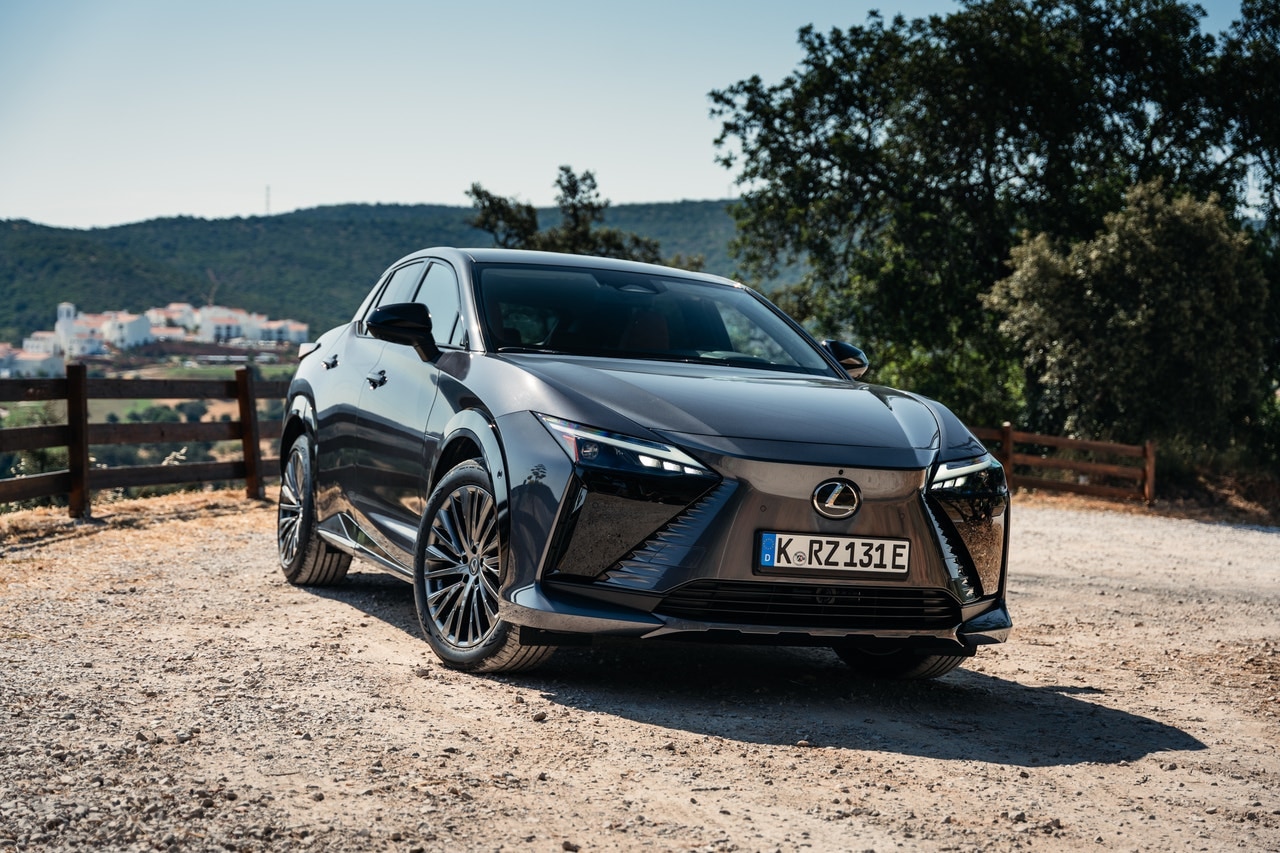
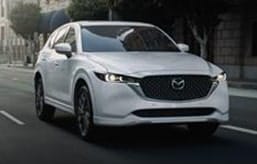



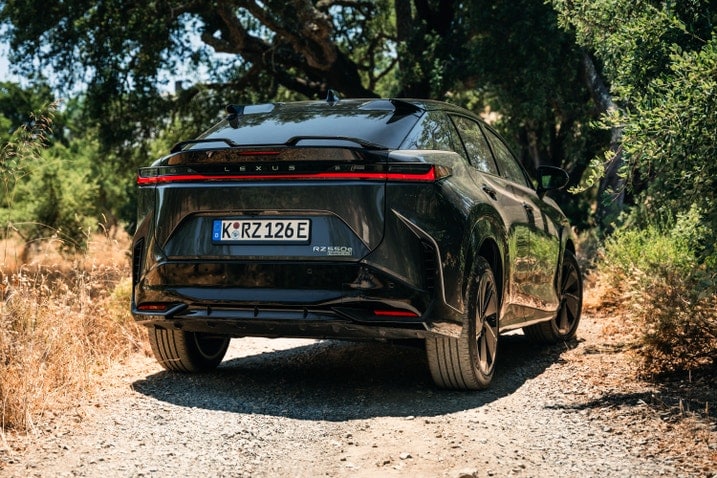
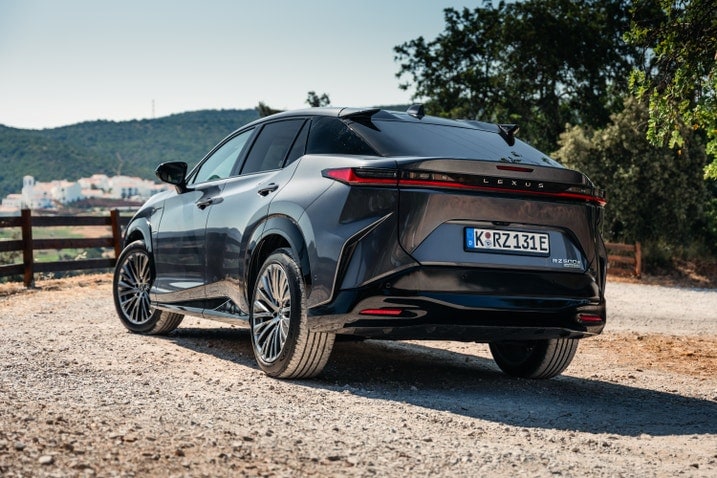
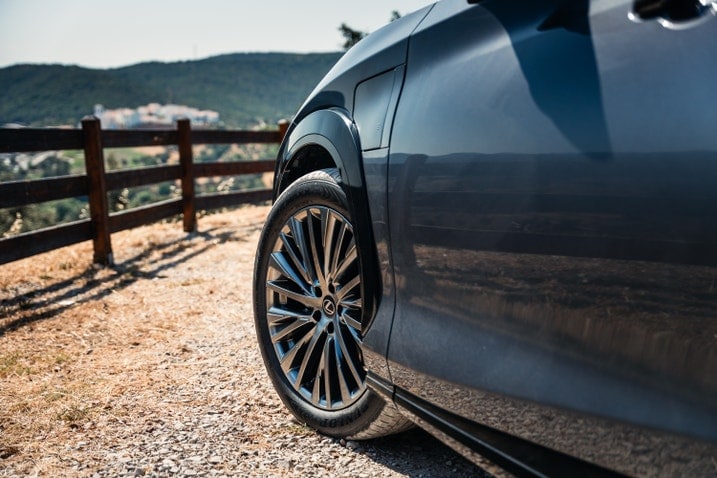
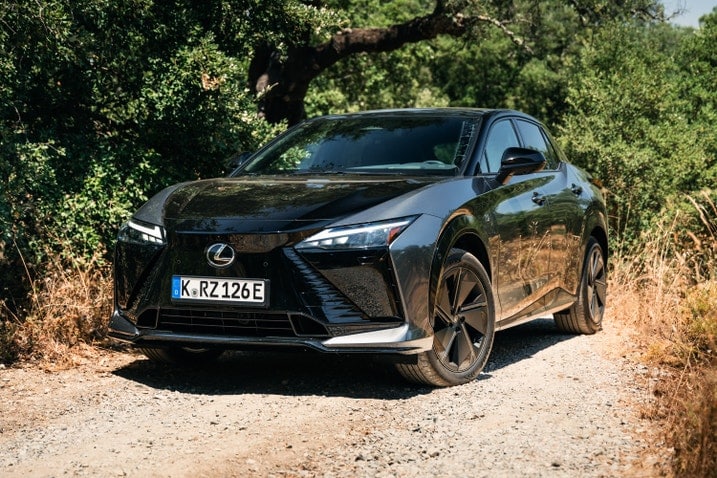
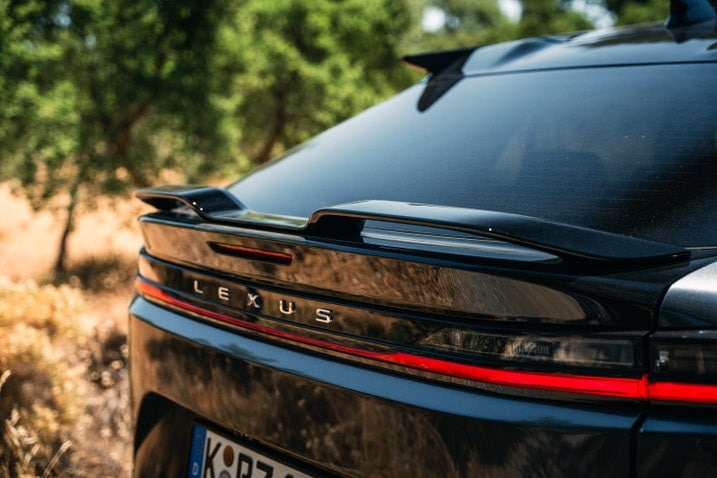
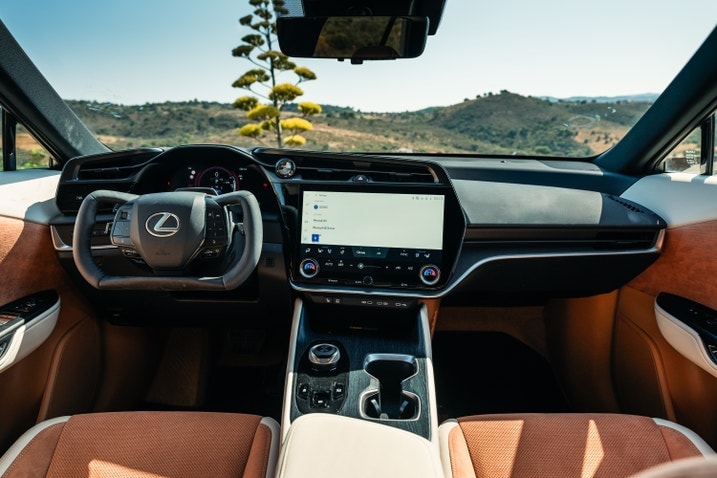
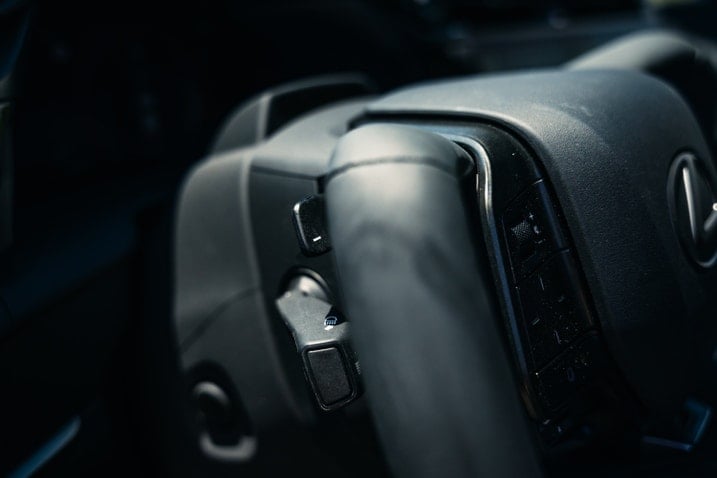
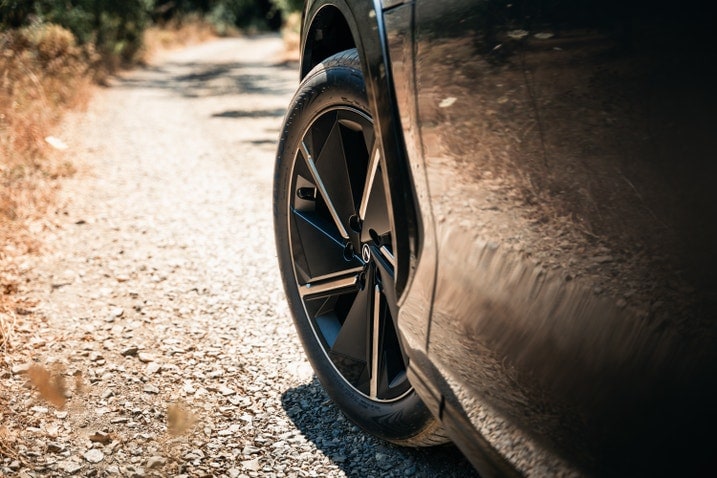
 by
by  edited by
edited by